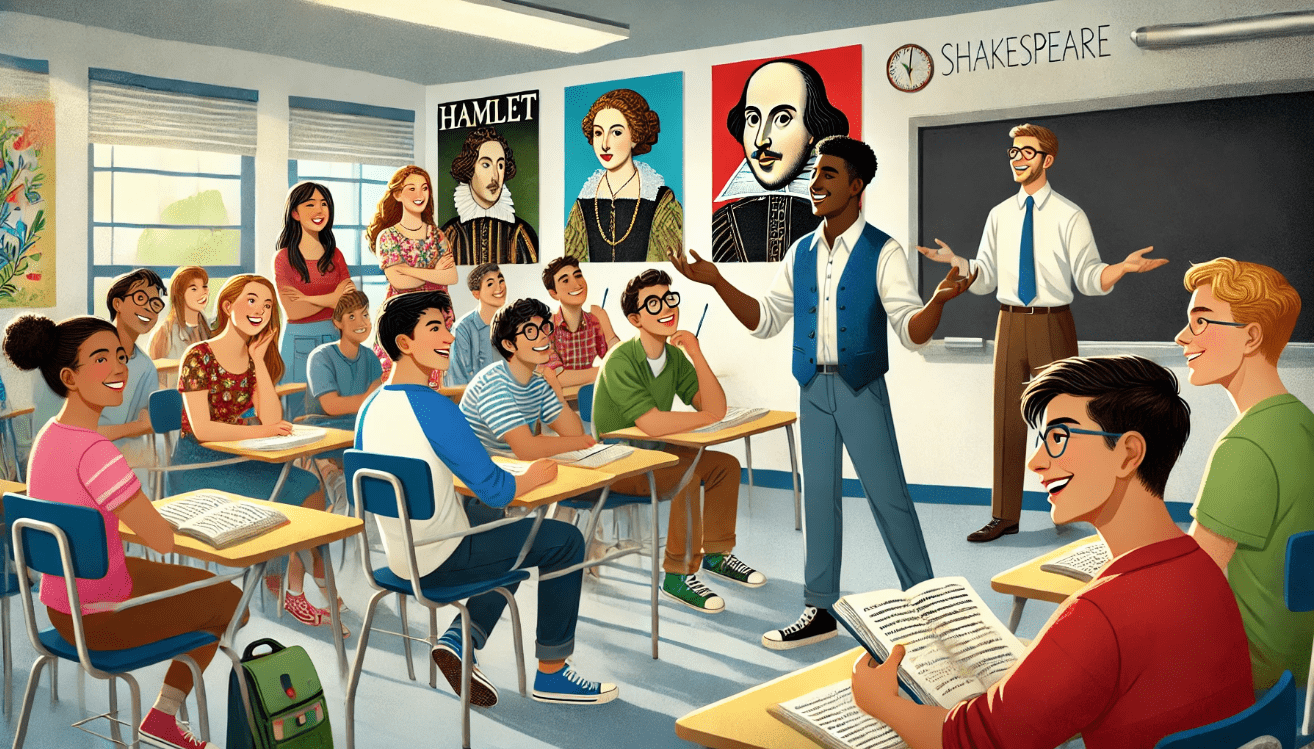
Unveiling Character Motivations: The Role of Soliloquies in Understanding Complex Personalities in Literature
Unraveling the mysteries of their hearts and minds can feel like a puzzle—especially in literature! 😊 Soliloquies, those captivating solo speeches, offer a direct glimpse into a character’s deepest thoughts, revealing the role of soliloquies in understanding character motivations. Whether you’re a student decoding Shakespeare, a reader craving connection, or a writer crafting complex personalities, this guide demystifies soliloquies with practical insights. Get ready to unlock the secrets behind characters’ actions and transform your reading experience! Keep scrolling to discover how.
Table of Contents
ToggleWhat Are Soliloquies? A Beginner’s Guide
Ever wondered what a character is really thinking? 😊 A soliloquy is a powerful literary tool where a character speaks their thoughts aloud, alone on stage or in a moment of solitude. It’s like eavesdropping on their innermost feelings, giving you direct access to their motivations and struggles.
Soliloquies have roots in ancient Greek drama but became iconic in Shakespeare’s plays, like Hamlet’s famous “To be or not to be” speech. They’re not just random rants—they reveal a character’s deepest desires, fears, or plans in a way dialogue with others can’t.
Key Features of Soliloquies:
- Spoken alone (or as if alone).
- Packed with raw emotions, like doubt or ambition.
- Often poetic, especially in classics like Macbeth or Romeo and Juliet.
Why does this matter? Soliloquies help you understand the role of soliloquies in understanding character motivations, making stories feel personal and relatable. Next time you read or watch a play, listen closely—these moments unlock the heart of the story! 😊
Why Soliloquies Matter: Unlocking Character Motivations

Ever read a story and wondered why a character made that choice? 🤔 Soliloquies are your key to solving this puzzle. They reveal the role of soliloquies in understanding character motivations by letting you peek into a character’s private thoughts, unfiltered by others.
Unlike regular dialogue, soliloquies expose raw emotions—think Hamlet wrestling with life and death or Lady Macbeth plotting in secret. This clarity helps you connect with characters on a deeper level, making their actions make sense.
Why This Helps You:
- Decode Complex Characters: Understand their fears, desires, or moral struggles.
- Boost Emotional Connection: Feel what they feel, from ambition to heartbreak.
- Improve Analysis: Perfect for students writing essays or readers diving into stories.
In real life, soliloquies guide students to ace literature assignments, help theatergoers appreciate performances, and inspire writers to craft authentic characters. Next time you encounter a soliloquy, you’ll see the story in a whole new light! 😊
How Soliloquies Enhance Literary Analysis

Want to crack open the secrets of a character’s mind? 😊 Soliloquies are your go-to tool for mastering literary analysis. They play a key role in the role of soliloquies in understanding character motivations, offering a direct line to a character’s thoughts, making analysis easier and more insightful for beginners and pros alike.
Here’s a simple, actionable guide to analyze soliloquies like an expert:
- Check the Context: What’s happening before the soliloquy? For example, Hamlet’s “To be or not to be” comes during his existential crisis, setting the stage for his thoughts.
- Examine Language and Tone: Look for vivid imagery, metaphors, or emotional shifts. Words like “slings and arrows” in Hamlet reveal his inner turmoil.
- Spot the Motivation: What does the character want? Hamlet’s soliloquy shows his fear of death and indecision about action.
- Link to the Plot: How does the soliloquy shape the story? Hamlet’s hesitation drives the play’s tragic delay.
Try this with Macbeth’s “Is this a dagger” soliloquy—it reveals his guilt and ambition, pushing the plot toward chaos. This approach helps students write sharper essays, readers connect with stories, and writers create richer characters. Start analyzing soliloquies to unlock deeper meanings in any text! 🚀
Soliloquies Across Genres and Eras
Ever noticed how characters’ inner thoughts shine through in different stories? 😊 Soliloquies, key to the role of soliloquies in understanding character motivations, aren’t just for dusty old plays—they evolve across time and genres, revealing universal human struggles in fresh ways.
Shakespearean Soliloquies:
In classics like Hamlet or Macbeth, soliloquies dig into deep conflicts—think Hamlet’s existential “To be or not to be” or Lady Macbeth’s chilling ambition. They’re often poetic, using iambic pentameter to unpack emotions like doubt or guilt.

Modern Twists:
Today’s stories adapt soliloquies creatively. In films like Fight Club, voiceovers act as soliloquies, exposing the narrator’s inner chaos. Novels use stream-of-consciousness, like in Mrs. Dalloway, to mimic that raw, introspective vibe.
Why It Resonates:
Across cultures and eras, soliloquies reflect timeless feelings—ambition, fear, love. Whether in a 1600s play or a 2020s movie, they make characters relatable, helping you connect with their motivations.
Next time you spot a soliloquy, notice how it bridges the story’s world to yours! 🌟
Practical Tips for Students and Readers

Ready to dive into soliloquies and uncover character motivations? 😊 These practical tips make the role of soliloquies in understanding character motivations easy to grasp, whether you’re a student tackling essays or a reader exploring stories.
Take Notes While Reading:
Jot down key phrases in a soliloquy, like Hamlet’s “To be or not to be.” Highlight emotions or conflicts to track what drives the character.
Watch Performances:
See soliloquies come alive in theater or film clips. Notice how actors emphasize emotions—try Macbeth on YouTube for inspiration!

Discuss with Peers:
Share your thoughts in study groups or online forums. Different perspectives can reveal new angles on a character’s motivations.
Practice Writing:
Write your own soliloquy for a character, real or fictional. It’s a fun way to understand their inner world and sharpen your skills.
Common Mistakes to Avoid When Analyzing Soliloquies
Analyzing soliloquies can feel tricky, but dodging common pitfalls makes the role of soliloquies in understanding character motivations crystal clear! 😊 Here’s how to avoid mistakes that trip up beginners.
Mistake 1: Treating Soliloquies Like Dialogue
Soliloquies aren’t conversations—they’re private thoughts spoken aloud. For example, Hamlet’s “To be or not to be” isn’t meant for others but reveals his inner fears. Fix: Focus on the character’s emotions, not interactions.
Mistake 2: Ignoring Context
Skipping the story’s background can blur a soliloquy’s meaning. Macbeth’s guilt-ridden speeches hit harder when you know his crimes. Fix: Check the play’s plot and historical setting, like Elizabethan beliefs.
Mistake 3: Missing Language Cues
Overlooking metaphors or questions, like Hamlet’s “slings and arrows,” hides deeper motivations. Fix: Use a dictionary or glossary to unpack poetic language and note emotional shifts.
These tips keep your analysis sharp, helping students, readers, and writers unlock characters’ true intentions! 🚀
Why Soliloquies Matter in Literature Classrooms
Soliloquies are powerful windows into a character’s thoughts, fears, dreams, and decisions. When a character speaks alone on stage, they’re not just filling space—they’re revealing their deepest truths. In the classroom, soliloquies offer a goldmine of teaching opportunities for helping students unpack complex personalities and motivations.
These solo speeches turn abstract character traits into real, relatable human emotions. And that’s where real literary engagement begins. 💡
How to Make Soliloquies Work for Students
Here’s how to bring soliloquies to life in your classroom—even for students who find Shakespeare or classic literature intimidating.
1. Start with What They Know 🎬
Begin with modern examples. Use monologues from movies, TV shows, or social media rants that feel like soliloquies. This helps students connect emotionally before diving into older texts.
👉 Example: Compare Hamlet’s “To be or not to be” with a scene from a popular show where a character debates a major life decision aloud.
2. Use Performance to Unlock Understanding 🎤
Have students act out soliloquies. Let them play with tone, pace, and body language. It’s not about being an actor—it’s about exploring how the character feels.
3. Annotate the Inner Voice 📝
Teach students to break down soliloquies line by line. Focus on emotions, word choices, and rhetorical devices. Help them ask:
- What is the character feeling here?
- Why this metaphor or word?
- What does this reveal about their mindset?
✅ Pro Tip: Use color-coding for emotions or motivations to make analysis visual and more interactive.
4. Connect to Themes and Decisions 🎯
Soliloquies are often pivot points—moments when characters make key choices. Help students tie the soliloquy to the larger themes of the work: ambition, love, revenge, identity.
5. Encourage Creative Responses 🎨
Let students write their own modern soliloquies from the character’s point of view—or even from their own. It builds empathy and deepens understanding.
✍️ Activity Idea: Write a diary entry or vlog-style soliloquy as if you were the character, just after the moment in the play.
Soliloquies = Character Clarity
When students truly engage with soliloquies, literature transforms. Characters become human. Emotions become real. And complex motivations start to make sense.

By making soliloquies interactive, personal, and accessible, you’re not just teaching literary analysis—you’re helping students see themselves in literature. And that’s the real power of great teaching. 💬✨
Soliloquies aren’t just literary devices—they’re emotional blueprints. When students explore these powerful moments, they gain direct access to a character’s mind, unlocking deeper insight into motivations, conflicts, and transformation.
By actively engaging with soliloquies—through performance, annotation, creative writing, and discussion—you create an environment where literature feels alive, personal, and relevant. 🎓❤️
More importantly, students begin to see characters not as distant figures from a dusty text, but as real people facing real dilemmas. And that kind of connection fuels stronger reading comprehension, empathy, and critical thinking.
Final Thought 💡
The next time you’re planning a literature lesson, remember: a single soliloquy can open the door to powerful discussions, fresh perspectives, and a whole new level of literary appreciation. Let your students step inside the character’s mind—and watch their understanding soar. 🚀📘
Frequently Asked Questions (FAQs)
1. What is the role of a soliloquy in storytelling?
A soliloquy reveals a character’s inner thoughts, emotions, and conflicts, usually when they are alone. It helps readers or viewers understand motivations that aren’t shown through action or dialogue with others.
2. How do soliloquies make characters more compelling?
Soliloquies give direct access to a character’s mind, making them feel real and relatable. They allow for deeper emotional connection and highlight personal struggles or turning points in the story.
3. What’s the difference between a soliloquy and internal monologue?
A soliloquy is typically spoken aloud, often in drama or scripts, while an internal monologue is silent and used in prose. Both show what a character is thinking, but soliloquies are more performative and structured.
4. How can I use soliloquies effectively in my writing?
Use soliloquies at emotional or decision-making moments in your story. Keep the voice true to the character, and let their thoughts reveal hidden fears, goals, or contradictions.
5. Why are character dynamics important in storytelling?
Character dynamics—how characters interact, grow, or clash—create tension, drive the plot, and keep readers emotionally invested. Strong dynamics lead to more layered, engaging stories.
6. How do I show character development through soliloquies?
Use soliloquies to track changes in your character’s mindset over time. Compare their early thoughts to later ones to show growth, shifting motivations, or emotional evolution.
7. Can beginners write effective soliloquies?
Yes! Start with short, honest thoughts from your character’s point of view. Focus on one emotion or decision, and write it in their unique voice to keep it authentic.
8. What are common mistakes to avoid when writing soliloquies?
Avoid making soliloquies too long, overly formal, or unrealistic. Don’t use them just to dump information—make sure they serve a clear purpose and reveal something new about the character.
